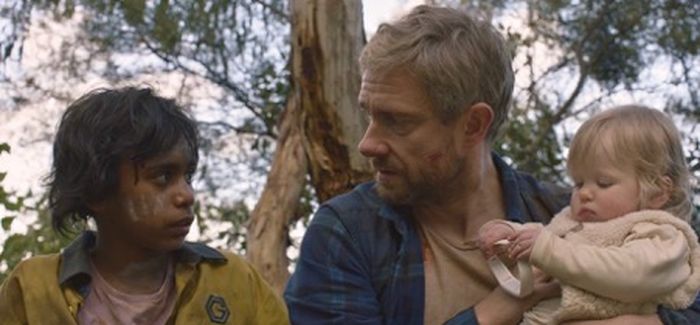The Lingering Shadow of Mrs Bates: Why is horror still obsessed with mothers?
From Hitchcock to Flanagan (Hill House; Bly Manor), the spectre of the mother looms large. Gigi Michie explores this figure, uncovering where she came from, and what new forms she’s taking
Alfred Hitchcock was once asked what awoke his interest in the macabre. He replied promptly, “my mother scared me when I was three months old … all mothers do it, you know. It’s how fear starts in everyone”. You have to wonder whether this belief inspired the most iconic plot twist in horror movie history: the female silhouette wandering around the Bates Motel of Psycho (1960), viciously stabbing people, was the outwardly sweet, almost childish proprietor, Norman Bates. Yet, was he the real monster?
“As the genre has become more existential, it seems directors find motherhood to be the best place to examine the human condition”.
“It was the mother”, proclaims the psychiatrist at the end of the film; a harping, carping shrew who, so he emphasises, sunk her claws into Norman’s psyche once his father died, leaving him with such pent up Oedipal angst that he eventually couldn’t live with or without her. He murdered her and her boyfriend out of jealousy, absorbing her personality out of guilt, forever dooming himself to a fate of killing any woman he finds attractive at his mother’s (imaginary) behest. In depicting a relationship of such twisted, oestrogen-fuelled codependency, Psycho influenced the horror genre to look at the private world of the family as a place where perversion could thrive; whether represented by satanic toddlers, possessed teenagers, or, most prominently, overbearing single mothers. The trope became most popular in the 70’s, amidst real tensions surrounding the changes brought about by second wave feminism: with greater freedom came more career-women, and a defiance against the expectation to become an automatic child rearer.
This alleged neglect of maternity is reflected by the lack of femininity on the part of the 70’s mother in horror. She’s usually witchy (bushy hair, bug eyes), asexual (cropped hair, lumpy jumpers, frumpy dresses), or an actual alien. The Brood (1979), which director David Croenenberg described as catharsis for his own ongoing divorce, takes Psycho’s destructive bond between mother and child and makes it literal. The film sees a father, Frank, fight for custody of his daughter from an ex-wife who is undergoing experimental psychotherapy, through which she vents all her repressed rage by giving birth to ready-made, homicidal mutants who kill anyone she feels ill will towards. She’s every inch the unfit mother: unstable, jealous, and selfish, and her targets include her own mother, who (naturally) is to blame for her tattered mental-state, and eventually her daughter, as she spits at Frank: “I’d kill her before I let you take her!”. In Carrie (1976), the mother’s protective instinct is similarly perverted into something oppressive and counter-productive. Feverishly religious, sexually repressed, and unstable, her sole purpose is to stunt sixteen-year-old Carrie’s emotional maturity, verbally flagellating her about the sins of puberty (“Eve was weak!”). Like Norman, Carrie has her own moment of belated teenage rebellion, but it’s all too little and too late for her, and it goes horribly, homicidally wrong.
In the last decade, the mother has once again become a central figure in horror: even in Netflix’s recently released The Haunting of Bly Manor (2020), a broody ghost mother is revealed to be the root of the house’s dark history. But she’s no longer just a monster. As the genre has become more existential, it seems directors find motherhood to be the best place to examine the human condition, with all its responsibility and inescapability. The modern horror mother is more interesting than her 70’s counterpart because she is simultaneously sympathetic and frightening; her transformation into a Mrs Bates figure is insidious. Horror films are now often told from her perspective, as we watch her desperation to hold a family together while her own mental health deteriorates. Ari Aster claims Hereditary (2018) is more drama than outright horror; his intention was to examine “the corrosive effects of trauma on the family unit”. It’s similarly true that, as with Jennifer Kent’s The Babadook (2014), the most unsettling aspect of the film is the realism of the increasingly erratic, almost animalistic behaviour of a mother racked by grief over the death of a loved one, her inability to control it, and her creeping alienation from her own child as a result.
Hereditary’s camera technique of having a doll’s house merge into the real scene gives the sense that the characters have no control over the events happening to them, and The Haunting of Hill House (2018) is similar in the way it plays with its own timeline. One eerie scene sees two young children predict their fates of drug addiction and depression to their horrified mother – yet this is her own imagination, and it is ironically her subsequent suicide which triggers their troubles in the first place. In these murky portrayals of family dysfunction, parenting, grief, and mental illness, trauma is first inflicted on the mother, and her flaws become relatable. As Jennifer Kent said of making The Babadook: “I wanted to talk about the need to face the darkness in ourselves and in our lives … The horror is really just a byproduct”.
 News / Eight Cambridge researchers awarded €17m in ERC research grants27 December 2025
News / Eight Cambridge researchers awarded €17m in ERC research grants27 December 2025 News / Clare Hall spent over £500k opposing busway 24 December 2025
News / Clare Hall spent over £500k opposing busway 24 December 2025 Comment / League tables do more harm than good26 December 2025
Comment / League tables do more harm than good26 December 2025 Comment / The ‘class’ of Cambridge24 December 2025
Comment / The ‘class’ of Cambridge24 December 2025 News / Caius mourns its tree-mendous loss23 December 2025
News / Caius mourns its tree-mendous loss23 December 2025









